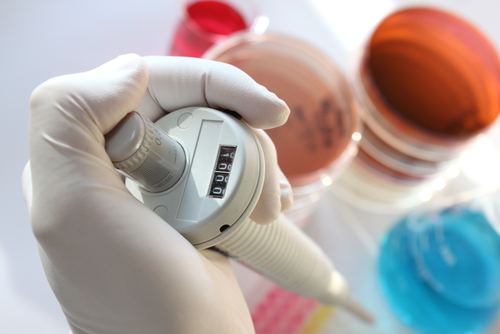A new study presents detailed information into the processes used by cancer cells to evade and resist the immune response. Researchers studied how the interferon gamma pathway guides cell signaling in melanoma cells by mapping the molecules and the interactions involved in the pathway.
The new findings can represent a significant step in understanding the mechanism by which certain melanomas shield themselves from anti-PD1 treatment, such as Keytruda (pembrolizumab).
The study, “Interferon Receptor Signaling Pathways Regulating PD-L1 and PD-L2 Expression,” was published in Cell Reports.
PD-1 (programmed death receptor-1) is a receptor molecule that exists at the surface of immune cells and when activated by its ligands (PD-L1 and PD-L2), it suppresses the function of immune T-cell.
This study proposes that, initially, tumor cells are recognized by T-cells, which causes the release of chemical signals called interferons. These, in turn, are identified by receptors at the surface of cancer cells and activate a chain of events that involves several molecules.
The authors discovered that the last molecule that takes part in this cellular pathway directly links to genes that encode for the PD-1 ligands, which activates the production of PD-L1 and PD-L2 in cancer cells, thereby inhibiting the antitumor immune response in a process known as adaptive immune resistance.
Treatments like Keytruda block the interaction between PD-1 and its ligands, causing a higher activation of T-cells and increasing the ability of the body’s immune system to help detect and fight tumor cells.
However, not all patients respond to anti-PD-1 treatment. Understanding the cellular mechanisms by which cancer cells produce PD-1 ligands and inhibit the anti-tumor immunity is an important step in characterizing the differences in the immune resistance of distinct melanomas.
The research team also obtained biopsy specimens from five melanoma patients, two of whom responded to anti-PD-1 treatment and three who were non-responding patients.
In contrast to the group of anti-PD-1 responding patients, tumor samples from non-responsive patients did not show an enriched expression of interferon gamma nor a higher gene expression and production of the PD-1 ligands.
These findings highlight the importance of the cellular mechanism described in this study to help identify the point at which the process is altered in patients with melanomas that do not respond to anti-PD1 treatment and can potentially indicate future targets for new cancer treatments.


